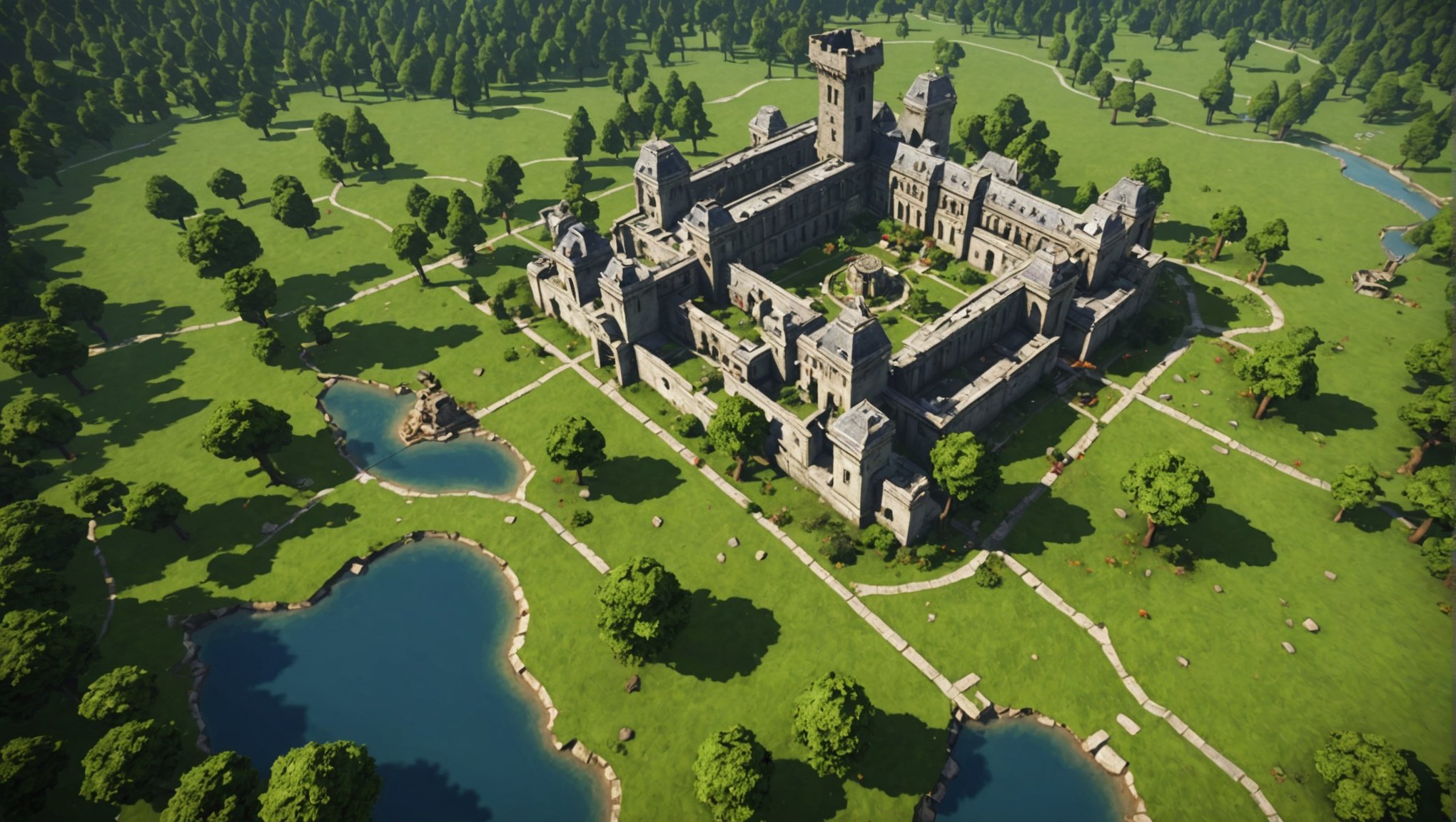Unlocking Infinite Worlds: A Developer’s Guide to Procedural Generation in Survival Game Landscapes
What is Procedural Generation?
Procedural generation is a technique used in game development to create content on the fly, rather than manually designing every aspect of the game world. This method has revolutionized the way developers create immersive and vast game environments, particularly in the survival game genre.
How Procedural Generation Works
Procedural generation uses algorithms to generate game content in real time. These algorithms can create terrain, buildings, resources, and even entire ecosystems, ensuring that each player’s experience is unique. For example, in games like No Man’s Sky and the upcoming Light No Fire, procedural generation is used to create entire planets or worlds that players can explore.
Also to read : Unlocking Fun: Enhancing Survival Games with Real-World Physics for Captivating Crafting Systems
"Hello Games is trying to create a multiplayer Earth, a space that's large enough to conceivably accommodate the 7.8 billion people that currently inhabit our planet," - GamesRadar on Light No Fire.
Benefits of Procedural Generation in Survival Games
Endless Variety and Replayability
One of the most significant advantages of procedural generation is the endless variety it offers. Players can explore new landscapes, discover unique resources, and encounter different challenges each time they play. This enhances replayability, making the game more engaging and fresh even after multiple playthroughs.
Reduced Development Time and Costs
Manually designing every detail of a large game world can be incredibly time-consuming and costly. Procedural generation automates much of this process, allowing developers to focus on other aspects of game design, such as gameplay mechanics and story development.
Topic to read : Unlocking Fear: Leveraging Adaptive Audio to Amplify Player Immersion in Horror Games
Enhanced Player Experience
Procedural generation can create a more immersive experience for players. For instance, in Light No Fire, the procedurally generated planet is so vast and detailed that players can explore mountains, oceans, and continents, each with their own unique features and challenges.
Tools and Tech Stack for Procedural Generation
Unity and Unreal Engine
Two of the most popular game engines used for procedural generation are Unity and Unreal Engine. Both offer robust tools and APIs that make it easier for developers to implement procedural content generation.
- Unity: Known for its flexibility and ease of use, Unity is a favorite among indie developers. It provides a wide range of plugins and assets that can be used to generate procedural content.
- Unreal Engine: With its powerful rendering capabilities and extensive documentation, Unreal Engine is often used for more complex and visually stunning games. It offers advanced tools for procedural generation, including terrain generation and dynamic level creation.
Other Tools and Libraries
In addition to game engines, there are several libraries and tools that can be used to enhance procedural generation. For example, Perlin noise and Voronoi diagrams are commonly used algorithms for generating natural-looking terrain.
Best Practices for Implementing Procedural Generation
Start Small and Scale Up
When beginning with procedural generation, it’s often best to start with small, manageable projects. This allows developers to test and refine their algorithms before scaling up to more complex environments.
Balance Randomness and Structure
While procedural generation relies on randomness, it’s crucial to balance this with structured elements to ensure the game world feels coherent and engaging. For example, in Terraria, the procedurally generated world has a clear structure with biomes and underground layers, but each instance is unique.
Use Real-World References
Drawing inspiration from real-world landscapes and ecosystems can help create more believable and immersive game worlds. For instance, the oceans and mountains in Light No Fire are designed to be as deep and imposing as those in the real world.
Examples of Successful Procedural Generation in Survival Games
No Man’s Sky
No Man’s Sky is a prime example of procedural generation in action. The game generates an entire universe of planets, each with its own unique flora, fauna, and resources. This allows players to explore an almost infinite number of worlds, each offering a different experience.
Light No Fire
Light No Fire, an upcoming game from Hello Games, takes procedural generation to a new level by creating a single, vast planet that all players can explore together. This multiplayer Earth is designed to be as dense and varied as our own world, offering endless opportunities for exploration and discovery.
Terraria
Terraria is another game that uses procedural generation effectively. Players can explore a procedurally generated sandbox world, digging deep into the earth to uncover resources and fight off monsters. The game supports both solo and multiplayer modes, making it a great example of how procedural generation can enhance gaming experiences.
Table: Comparing Procedural Generation in Different Survival Games
| Game | Procedural Generation Scope | Multiplayer Support | Game Engine |
|---|---|---|---|
| No Man’s Sky | Entire universe of planets | Yes | Custom Engine |
| Light No Fire | Single planet to scale | Yes | Custom Engine |
| Terraria | 2D sandbox world | Yes | Custom Engine |
| Project Zomboid | Procedurally generated maps | Yes | Custom Engine |
| Grounded | Procedurally generated backyard | Yes | Unreal Engine |
Practical Insights and Actionable Advice
Team Size and Collaboration
Procedural generation can be complex and requires a team with diverse skills. Collaborating with designers, programmers, and artists is crucial to ensure that the generated content is both visually appealing and functionally sound.
Early Access and Community Feedback
Releasing a game in early access can be beneficial for gathering community feedback on procedural generation. This allows developers to refine their algorithms and make necessary adjustments based on player experiences.
Real-Time Generation vs. Pre-Generated Content
While real-time generation offers the most flexibility, pre-generating content can help with performance optimization. Developers should consider a balance between the two to ensure smooth gameplay and an immersive experience.
Procedural generation is a powerful tool in the arsenal of game developers, especially in the survival game genre. By understanding how to implement and balance procedural content, developers can create vast, immersive worlds that offer endless variety and replayability. Whether you’re working on a small indie project or a large-scale AAA game, mastering procedural generation can elevate your game to new heights.
"Where you choose to go next, and how you want to try and get there, is completely up to you. There's a whole world out there to be explored," - GamesRadar on Light No Fire.
As the gaming industry continues to evolve, the use of procedural generation will likely become even more prevalent, offering players new and exciting gaming experiences that are as unique as they are engaging.











